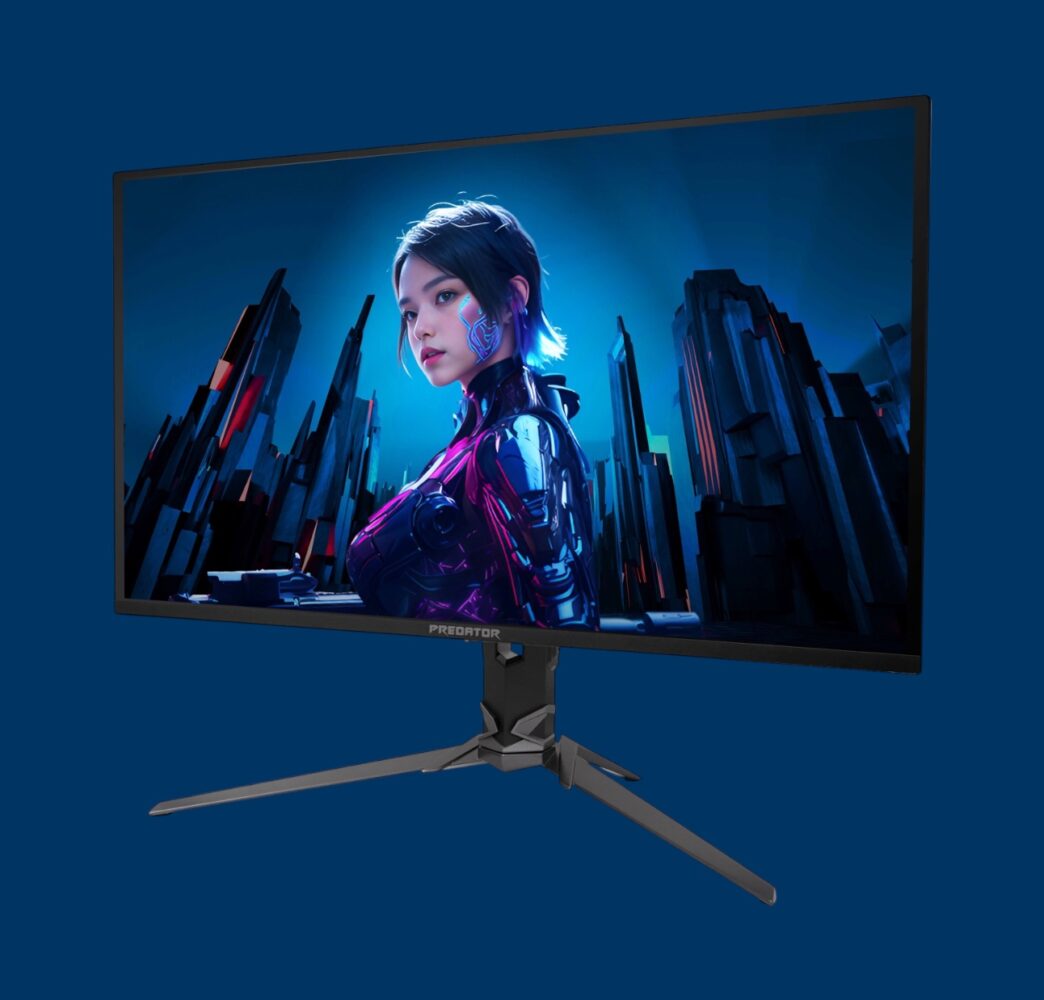The Samsung Galaxy A series has built a reputation for offering reliable, feature-rich smartphones at accessible prices. The Galaxy A55 continues this tradition, providing a strong balance of performance, design, and camera capabilities that cater well to its target audience. Let’s dive into the specifics.
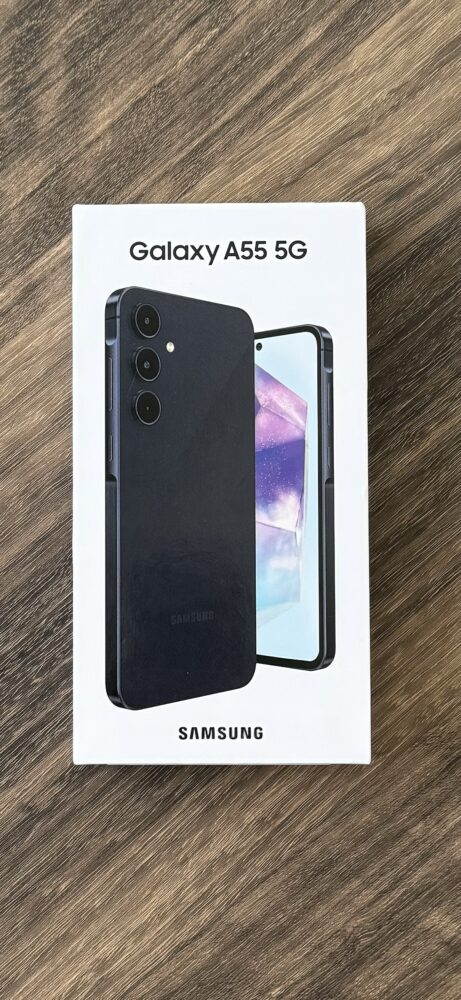
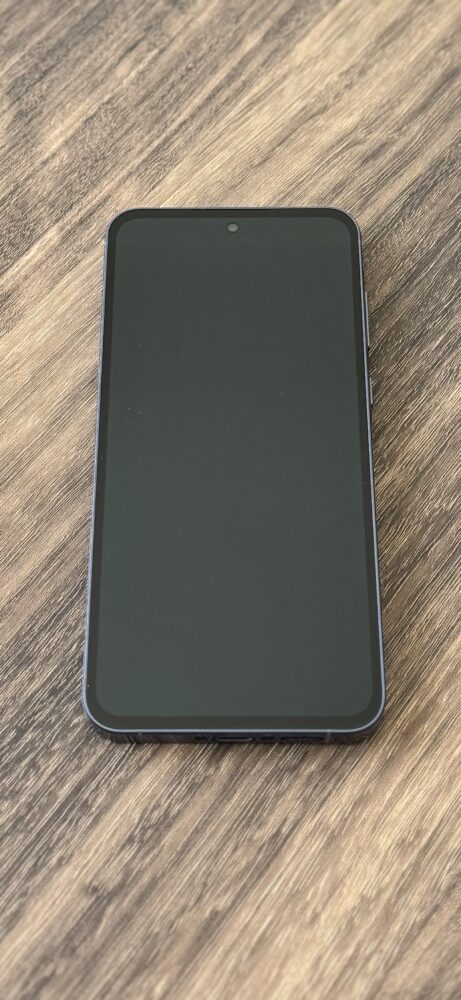

The A55 launches into a crowded market, arriving just ahead of Google’s hotly anticipated budget contender, the Pixel 8a. The Galaxy A55 packs the features and performance to make it a serious competitor. So, is it worth the hype? Let’s dive in and discover what makes this phone tick.
Design: Borrowing the Best, and a Quirky New Feature
Samsung has wisely lifted the Galaxy S24 series’ flat sides and individually mounted rear cameras and applied them to its more affordable A55. It’s a winning combination that gives this budget phone a surprisingly premium look. There’s a subtle quirk, however – one that Samsung doesn’t even officially name. I like to call it the “Island.” This is a raised portion of the side rail that houses the volume and power buttons. I worried that my search for the power button might be hampered by this new feature, but that turned out to be unfounded. The design feels quite natural.
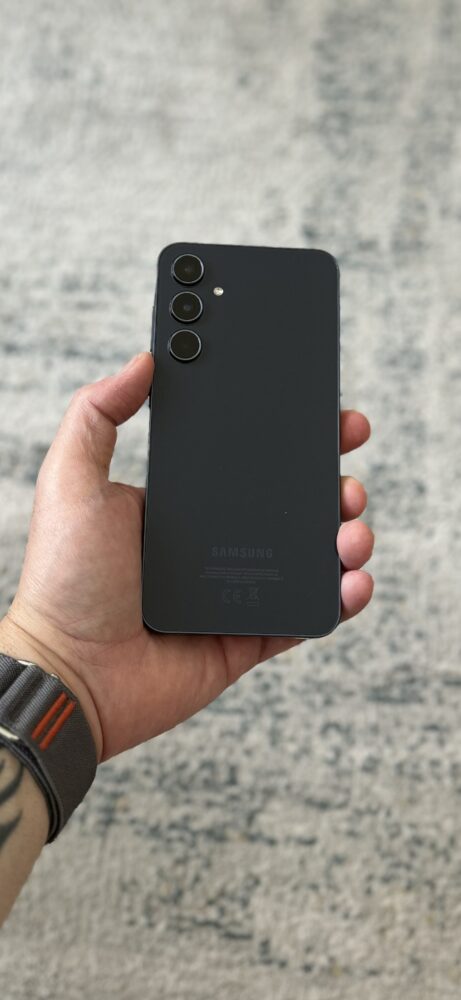
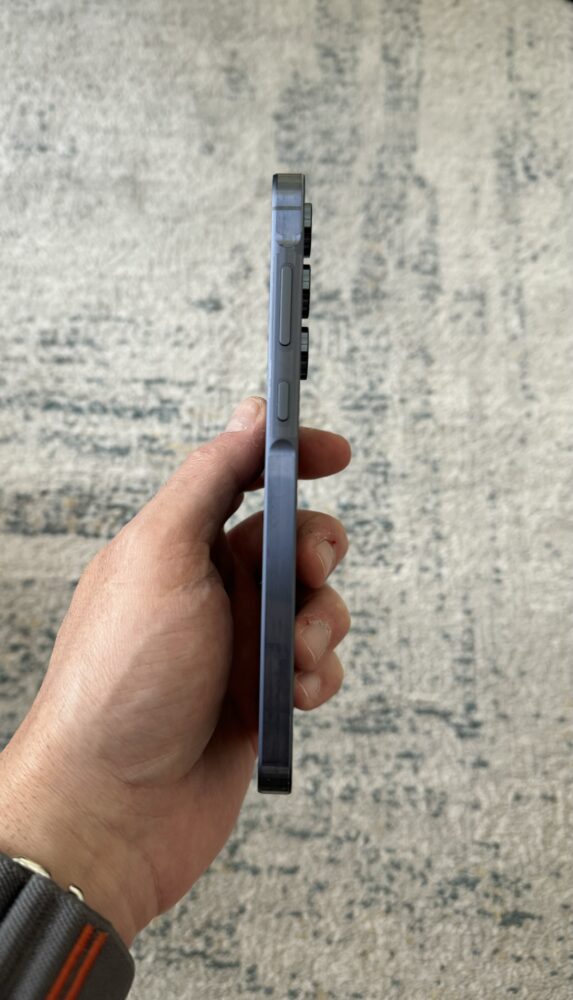
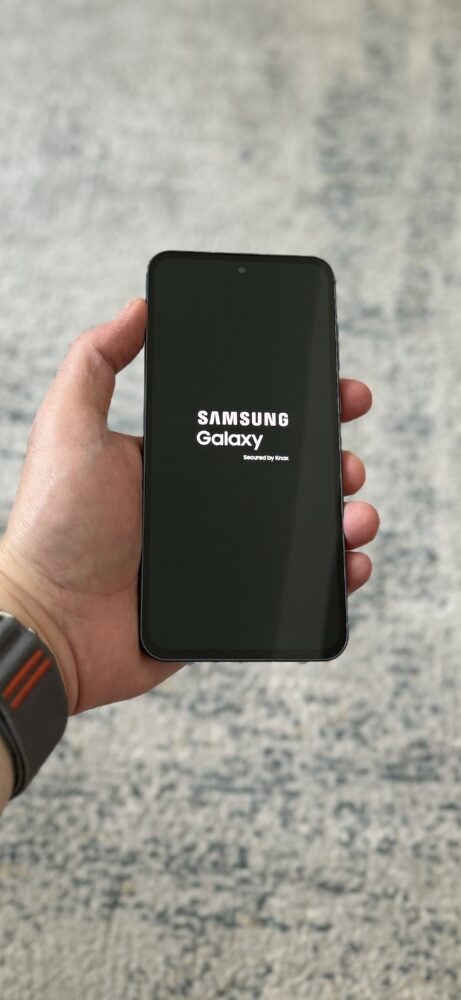
The Galaxy A55’s colors are a refreshing departure from the sensible tones of its flagship siblings. “Ice Blue,” “Lilac,” “Lemon,” and “Awesome Navy” add a splash of personality that stands out in a sea of muted smartphone palettes. I also found the brushed texture of the side rails a nice touch, distinguishing the A55 from its premium cousins.
Display: Large, Bright, and Smooth
Samsung has outdone itself with the Galaxy A55’s 6.6-inch OLED display. This expansive screen surpasses both the Galaxy A54 and the Pixel 7a in size, making it an excellent choice for media consumption and gaming. While I couldn’t verify the claimed 1,000 nits peak brightness, I can attest to its excellent visibility even under harsh sunlight.
The real star of the show is the 120Hz adaptive refresh rate. Never before seen in the Galaxy A series, this feature intelligently adjusts the refresh rate for optimal smoothness. While it doesn’t match the absolute fluidity of a flagship phone’s display, the A55’s screen delivers incredibly satisfying scrolling and overall responsiveness.
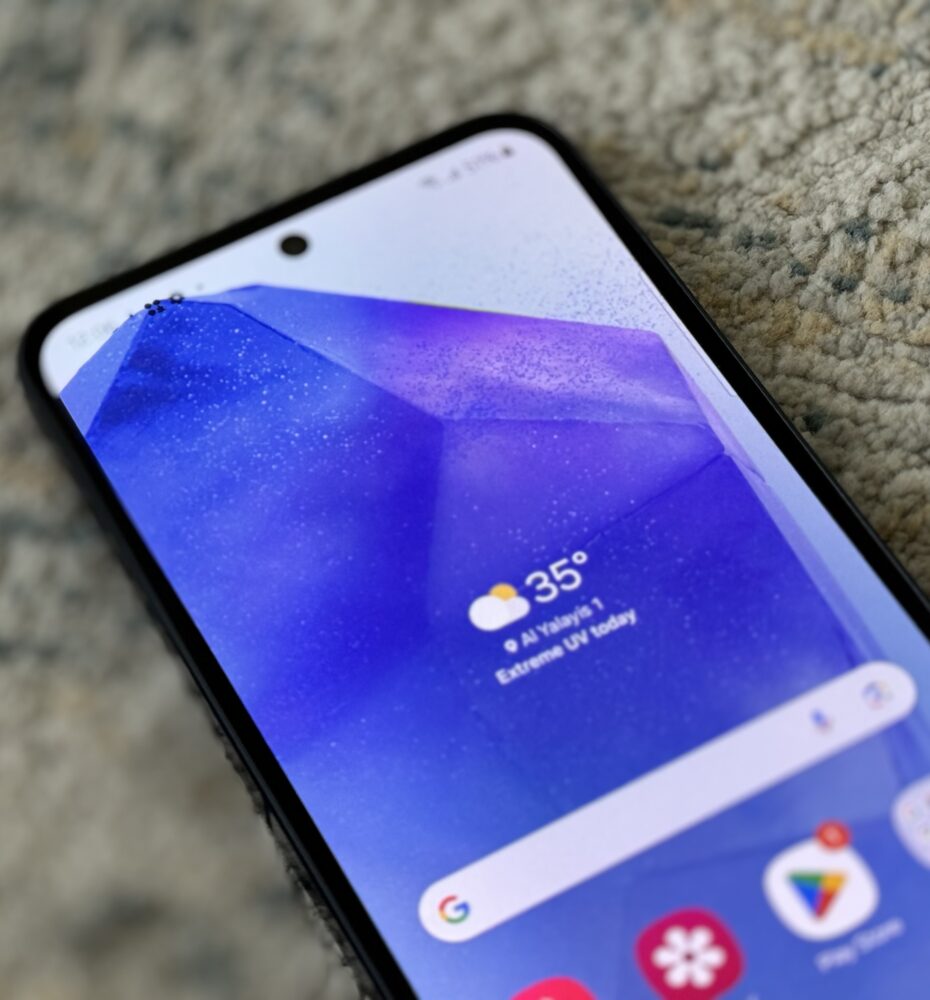


Whether you’re streaming your favorite shows, scrolling through social media, or immersed in a mobile game, the Galaxy A55’s display offers a level of size and smoothness that punches well above its price point. It’s one of the primary reasons this budget-friendly phone delivers a surprisingly enjoyable user experience.
Additional Points
- Color Vibrancy: Samsung displays are known for their saturated colors, and the A55 is no exception. If you enjoy a punchy and vivid look, this display will please you. Those preferring more natural color reproduction might find it a bit oversaturated.
- Viewing Angles: As expected from an OLED panel, the A55’s display maintains excellent visibility even when viewed from off-center angles. Colors remain consistent even when the phone is tilted.
- Resolution: The display boasts a Full HD+ resolution, which offers ample sharpness for everyday use. You might notice some slight pixelation if you look very closely, but it’s not a deal-breaker.
- Gorilla Glass Victus Plus: Samsung has equipped the A55 with the latest and toughest Gorilla Glass Victus Plus, offering excellent scratch resistance and increased drop protection. This gives you extra peace of mind when using the phone without a case.
Cameras: A Mixed Bag with Surprising Strengths
On paper, the Galaxy A55’s cameras might seem underwhelming. You get a 50MP main sensor, a 12MP ultrawide, a 5MP macro, and a 32MP front camera – a setup that’s become standard for mid-range phones. However, don’t let the specs fool you. Samsung has refined its image processing, giving these cameras extra punch and making them more competitive than you might expect.

The Main Attraction: Samsung Colors
Samsung’s signature vibrant colors leap off the screen, giving photos an immediate ‘wow’ factor that other smartphones in the same category sometimes lacks.
The ultrawide comparison follows a similar pattern. The A55’s tendency to boost colors can make for some pleasing shots, but there’s a degree of artificiality compared to the others’ more natural approach. Ultimately, which camera wins out is a matter of your personal preference.
The Surprise Star: A Macro Camera Worth Using: I’ll admit I’m usually dismissive of the low-resolution macro cameras that are common on budget phones. However, the Galaxy A55 managed to change my mind. While not a substitute for a true telephoto lens, it captured some surprisingly detailed close-up shots, outperforming the pricier OnePlus 12R. Samsung seems determined to squeeze as much quality as possible out of this camera type, and it shows.
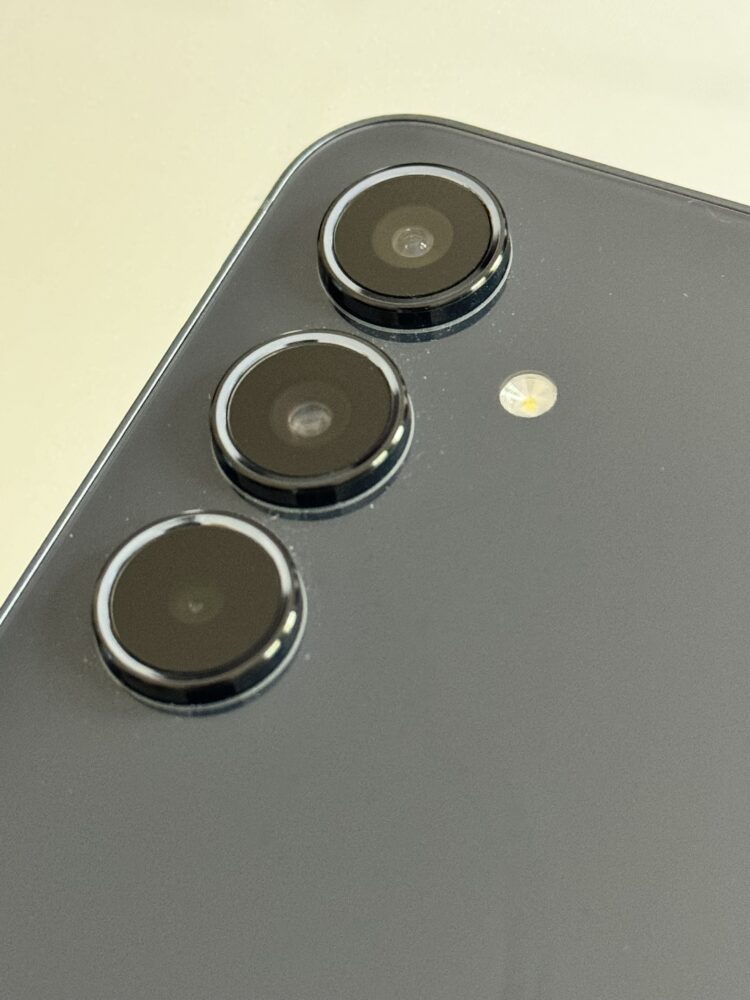
Selfies and Beyond: Software Enhancements Matter: While specs matter, Samsung’s software plays a crucial role in the overall camera experience. The 32MP front camera certainly delivers decent selfies, but it’s the processing that makes a real difference. Skin tones look natural, and the portrait mode does a decent job even with challenging backgrounds.
The Galaxy A55 won’t dethrone photography leaders or dedicated camera phones, but it delivers far more than its spec sheet suggests. The main camera’s vibrant shots are great for social media, the ultrawide is reliable for capturing landscapes, and the surprisingly competent macro camera adds a touch of versatility.
Photo Gallery







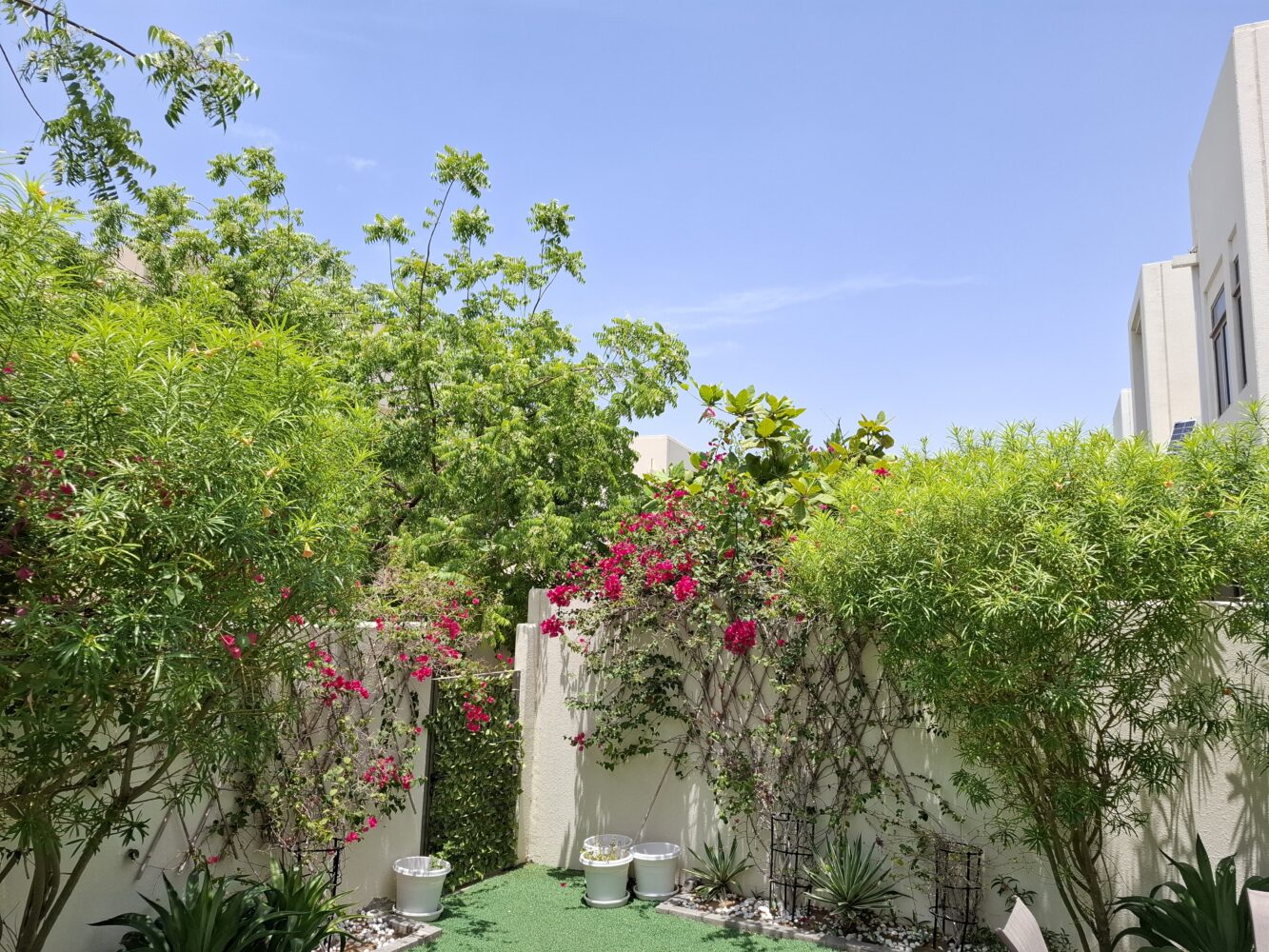

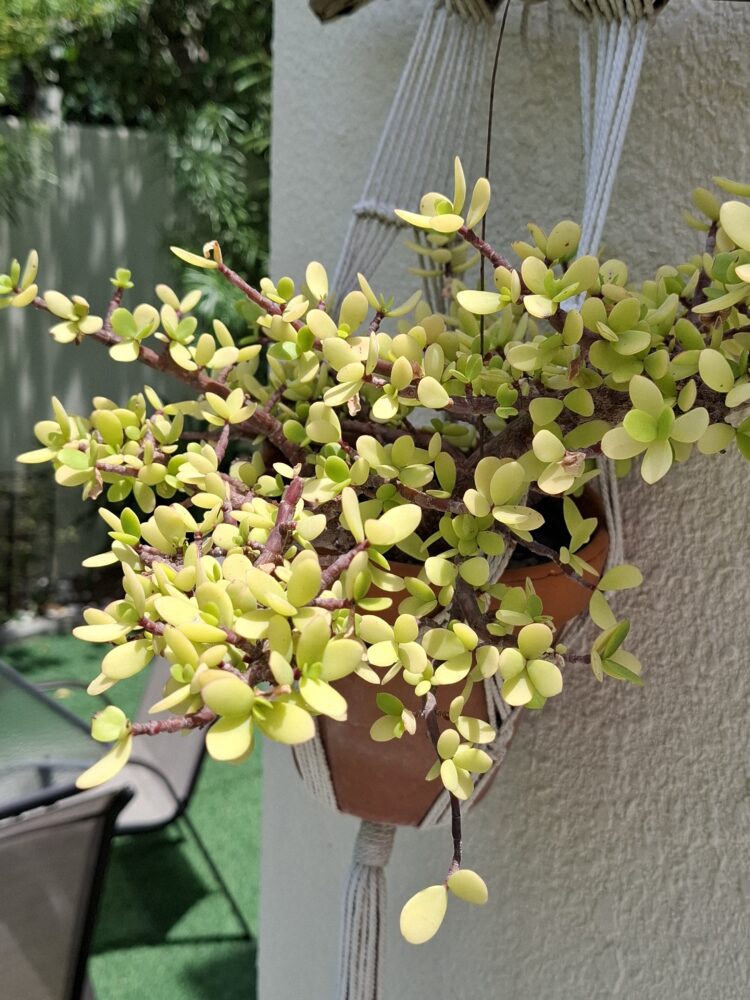



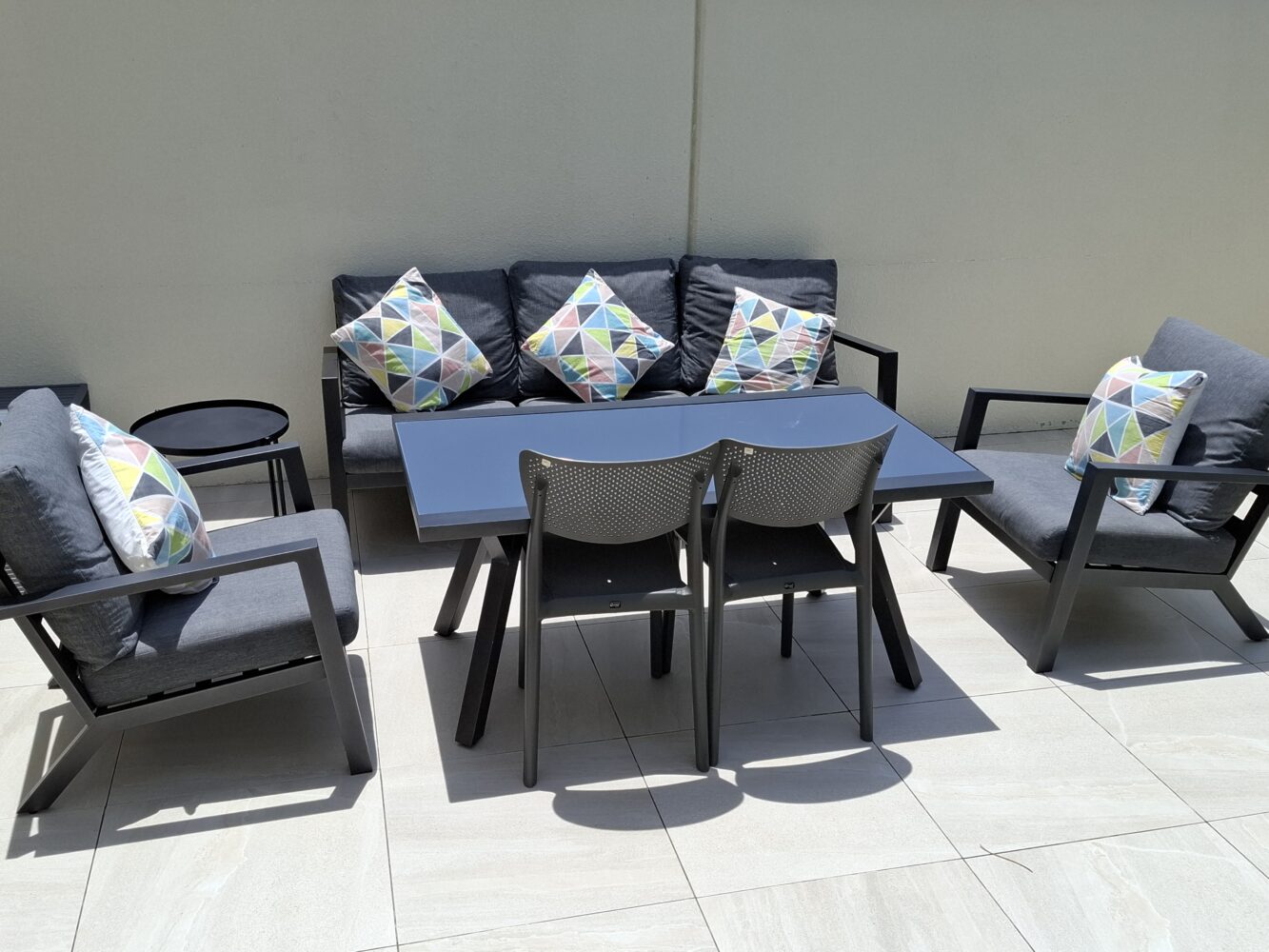

Performance: The Achilles Heel
The Galaxy A55 packs a brand-new heart: Samsung’s Exynos 1480 chipset. However, don’t let its newness deceive you. This processor puts energy efficiency before raw power. While perfectly capable of handling everyday tasks and even some light gaming, serious mobile gamers and power users might be left wanting.
Benchmarks vs. Reality: Benchmark scores tell a clear story. The Snapdragon 8 Gen 2 powering the OnePlus 12R, deliver significantly higher performance than the Exynos 1480. Still, real-world experience matters more than numbers. The Galaxy A55 felt reasonably snappy in day-to-day use. Apps open quickly, and scrolling feels smooth. Occasional stutters did crop up, but nothing serious enough to ruin the experience.
Gaming: Capable, with Compromises: Even demanding games like Grid Autosport proved playable on the A55, but it’s clear this phone isn’t designed for hardcore gaming. You might need to dial down graphics settings for optimal performance, and even then, don’t expect the silky-smooth framerates or visual fidelity offered by pricier, gaming-focused devices.
The Software Factor: Samsung’s One UI software plays a significant role in how the Galaxy A55 performs. While generally well optimized, One UI can occasionally feel a bit heavier than stock Android or other streamlined interfaces. This is where a more powerful chipset would shine, ensuring a consistently snappy experience.

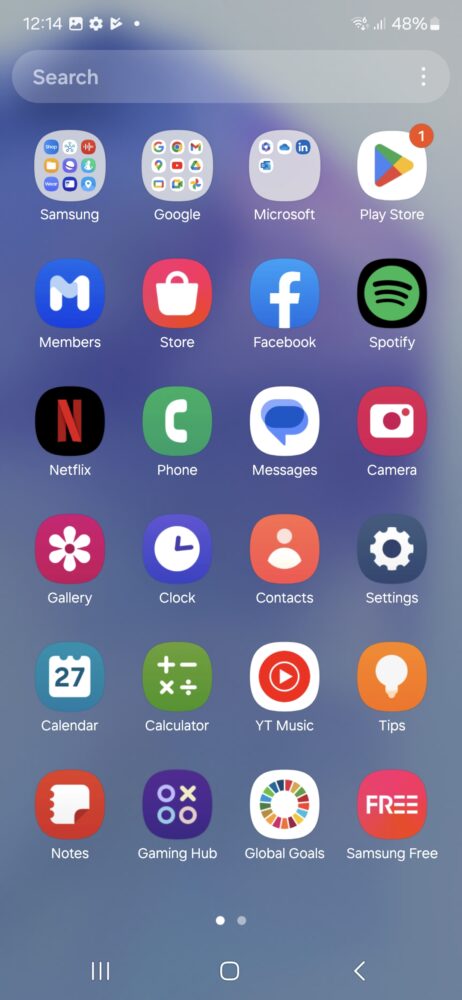
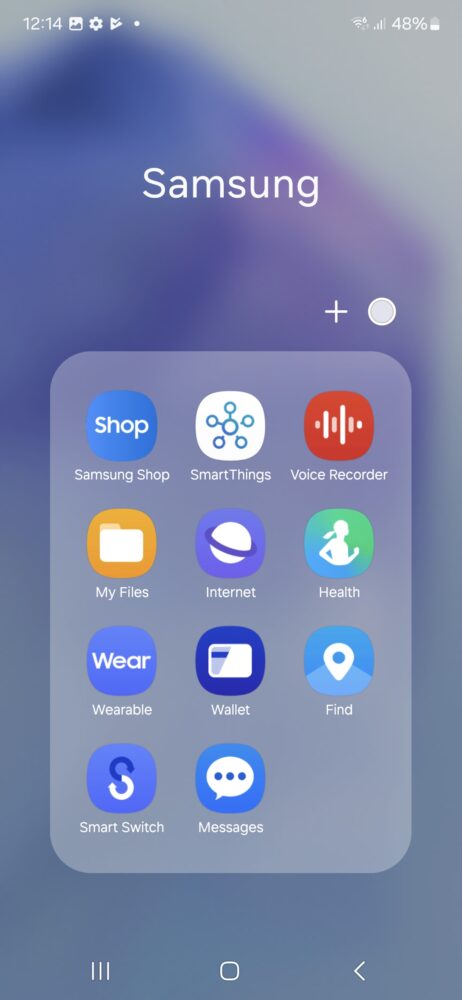
The Galaxy A55’s performance is perfectly adequate for the average user. If you mainly use your phone for social media, messaging, web browsing, and light gaming, the Exynos 1480 won’t disappoint. However, if you demand lightning-fast app launching, multitasking without limits, and the most visually stunning mobile games, you’ll be better served by looking elsewhere.
The Efficiency Angle: It’s worth considering that Samsung has likely prioritized battery life when choosing this processor. A less powerful chipset means less power drain, which could contribute to the A55’s potentially excellent battery life. It’s a trade-off, and one that makes sense for a budget-conscious device.
The Galaxy A55 won’t win any speed contests, but it delivers a perfectly serviceable experience for most users. Samsung has found a reasonable balance between power and efficiency, ensuring the essentials are covered while keeping the price tag in check. If you crave the absolute best performance, however, this isn’t the phone for you.
Battery and Charging: Going the Distance
One of the most exciting aspects of the Galaxy A55 is its sizeable 5,000 mAh battery. In a world where phones often struggle to last a full day, this large capacity hints at excellent longevity. My experience backs up this promise – I consistently achieved a full day of use with plenty of juice to spare.
More Than Just a Big Number: While the 5,000 mAh capacity is impressive, real-world performance is what truly matters. To gain a better understanding, I put the A55 through a simple endurance test: three hours of continuous YouTube video playback. After this marathon, the battery drained by around 26%, which is incredibly promising. That puts the A55’s efficiency on par with endurance champions like the iPhone 14 Pro Max and surpasses many similarly priced Android competitors. Of course, a proper lab test is needed for a fully conclusive verdict.
Charging: Not the Fastest, But Adequate: The A55 supports up to 25W wired charging. While far from the blazing speeds of some premium phones, it’s perfectly reasonable for its price range. I was able to consistently recharge the phone from empty to full in about an hour and a half. This is fast enough for a quick top-up before heading out or an overnight charge. Unfortunately, like many manufacturers, Samsung has ditched including a charger in the box, so you’ll need your own compatible power adapter.
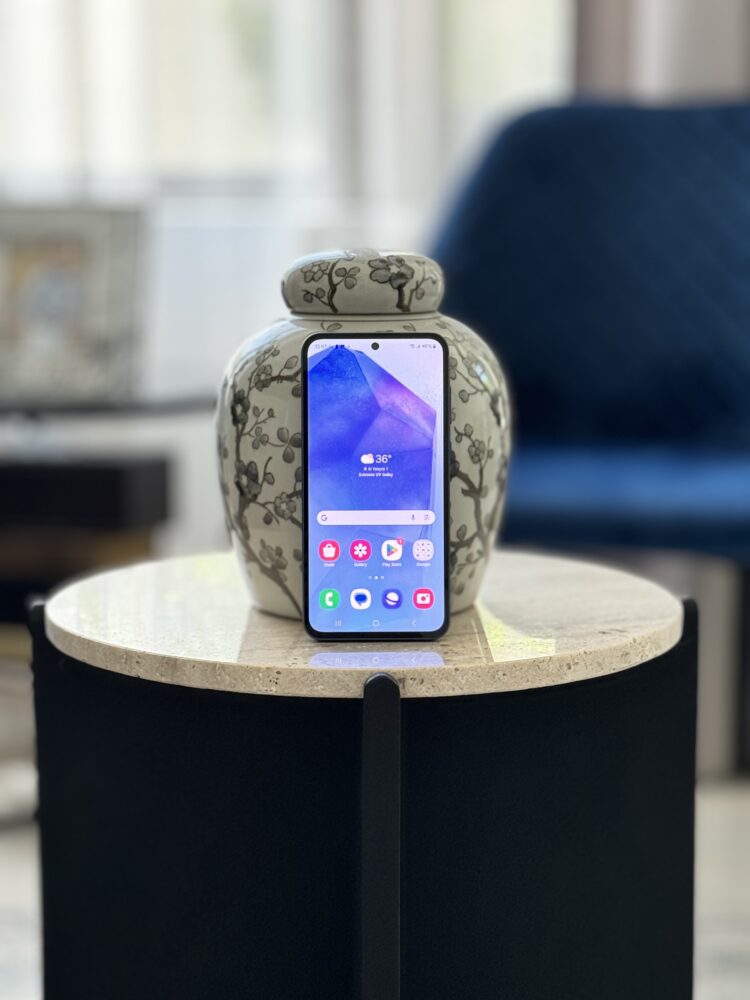
If you’re sick of phones that barely make it through the day, the Galaxy A55 offers refreshing reassurance. Its combination of capacity and efficiency should comfortably get most users through even demanding days without needing to constantly hunt for a charger. While its charging speeds aren’t revolutionary, they are sufficient to keep you topped up when needed. The Galaxy A55 clearly sets battery life as a top priority.
The Verdict: A Strong Contender in the Budget Arena
The Galaxy A55 builds upon the legacy of its predecessors, offering a compelling package at a competitive price.
Compared to the performance-focused OnePlus 12R, the A55 strikes a better balance between features and price. The A55’s larger display and surprisingly capable macro camera will sway users who prioritize those aspects. For now, we give it the best budget smartphone label.





